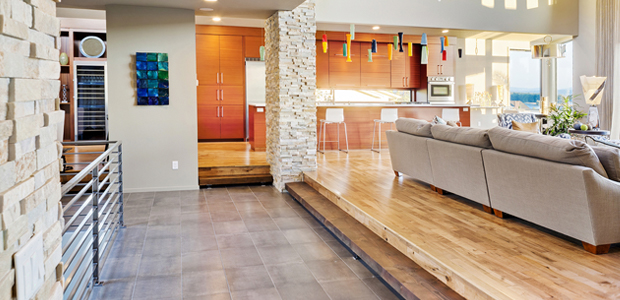
Finding the perfect flooring can be downright daunting. Not only are there hundreds of options to choose from, but there are also a number of important factors to consider with regard to each — practicality, durability and cost to name a few. Don’t let the decision-making get you down. We’ve compiled a handy summary of the most popular flooring materials — as well as a snapshot of the pros, the cons and the costs of each — to help you choose the best flooring material for your home.
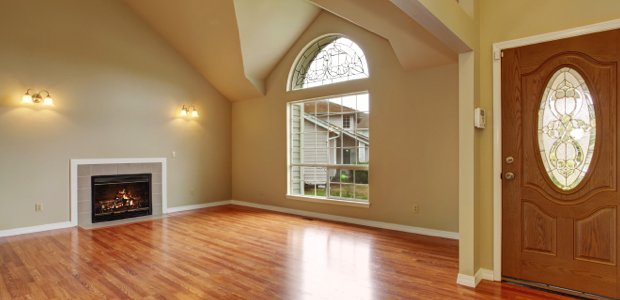
Hardwood
You can’t beat the beauty, durability and versatility of hardwood flooring and its engineered counterparts. Not only is hardwood flooring easy to maintain and restore, but it can also be styled and stained to complement every taste. The downside to solid hardwood is that it’s highly susceptible to water damage. Also, softer varieties may scratch easily, making them less practical for households with dogs and kids.
Perhaps the greatest downside to hardwood flooring is its cost. According to our True Cost Guide, most homeowners spend between $2,619 and $6,446 to install hardwood flooring. The cost of your hardwood installation project will depend largely on the type of wood you choose and the square footage of your flooring area. The good news is that, in most cases, hardwood flooring will also increase the resale value of your home.
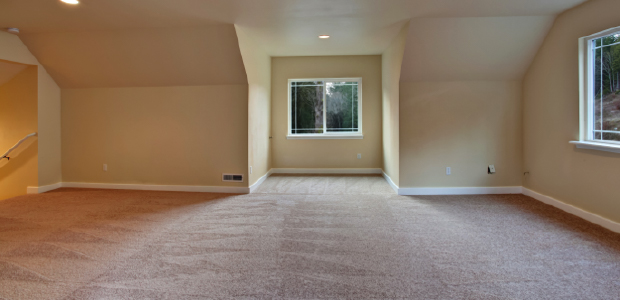
Carpet
Carpet is comfortable and easy to care for, making it a popular choice for bedrooms and living areas. One benefit of carpet is that there are many styles, colors and textures to choose from. Another is that it provides increased insulation and helps to minimize sound. Disadvantages of carpet include its vulnerability to stains and water damage (it’s best not to install carpet in bathrooms), as well as its tendency to collect particles known to aggravate allergies and respiratory conditions.
According to our True Cost Guide, most homeowners spend between $752 and $2,304 to install carpeting. The cost of your carpeting project will depend on the quality of the carpet you choose and the square footage of the area to be carpeted. Another (often overlooked) cost consideration is carpet padding. While installing new padding will add to the overall cost of your project, it will also add to the comfort and longevity of your floor.
Calculate carpet vs. hardwood costs before beginning your next flooring installation or renovation project.
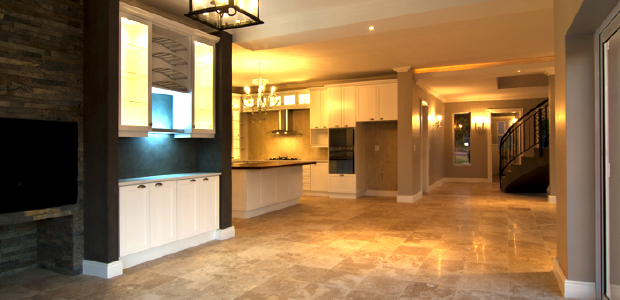
Ceramic And Porcelain Tile
Ceramic and porcelain tile are well suited for any space. In fact, with the introduction of wood plank tile (tile that resembles hardwood), they’ve become increasingly popular for use in main living areas. The upside to ceramic and porcelain is that there are many attractive options that require little to zero maintenance (apart from regular mopping and occasional repair). The downside is that they can be cold on bare feet. Fortunately, the installation of radiant heat below ceramic and porcelain tiles can make them a warmer and more comfortable flooring option.
Not all tiling projects are created equal. The cost of your project will depend on the tile you choose and the square footage of the flooring area. Additional factors, such as sub-flooring and the inclusion of intricate patterns or designs, may also affect your project’s cost. According to our True Cost Guide, most homeowners report spending between $925 and $2,363 to install ceramic or porcelain tile flooring.
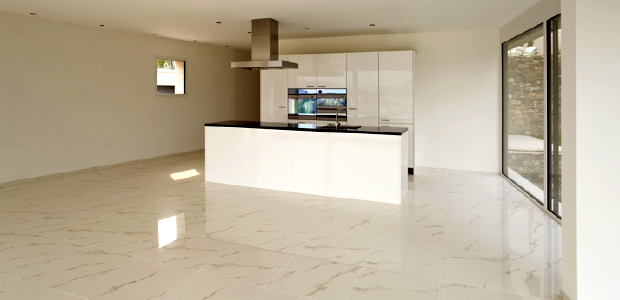
Natural Stone
Natural stone flooring — including granite, marble, travertine and limestone — is as classic and stunning as it comes. Unfortunately, it’s also as high-maintenance as it comes. While extremely durable, natural stone is also both soft and porous, making it susceptible to scratching and staining. For this reason, all natural stone must be kept free of dirt and spills, and it must also be periodically resealed to maintain its condition. Well-maintained, natural stone materials will preserve beautifully for decades.
The cost of your natural stone installation will depend on the square footage of your flooring area, as well as the material you choose. (Some natural stone is exceptionally expensive compared to other varieties.) Like ceramic tile projects, natural stone projects may require additional sub-flooring, as well as time and consideration to extras such as intricate patterns or designs. It’s also a good idea to consider the cost of ongoing upkeep when considering natural stone. Most homeowners report spending between $922 and $2,735 to install natural stone flooring, according to our True Cost Guide.
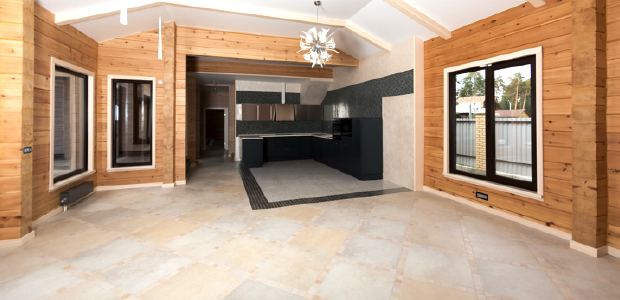
Vinyl And Linoleum
Vinyl and linoleum have come a long way in the last 20 years. They’re still the most affordable flooring materials, but they no longer look the part. One upside to vinyl and linoleum is that they wear well and are resistant to water and stains. Another is that there are a variety of modern and stylish options to choose from — many of which are easy to install and repair DIY. The downside to vinyl and linoleum is that they are susceptible to peeling and tearing. Also, while highly practical, the materials will do nothing to increase the resale value of your home.
According to our True Cost Guide, most homeowners spend between $712 and $1,632 to have a professional install vinyl and linoleum flooring. The cost of your installation will depend on the material you choose, the condition of any existing subflooring and the square footage of your project area.
Not Sure Which Flooring to Choose?
Ultimately, the best flooring for your project will depend on your budget and lifestyle. Give careful consideration to how you’ll use the room in which you’re installing flooring, how much you’re willing to spend up front, as well as to how much effort you’re willing to put into ongoing maintenance. With so many options available, you’re sure to find the perfect flooring for your project.
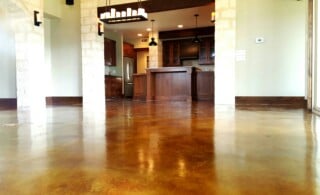 Concrete Flooring – Solid as a Rock
Concrete Flooring – Solid as a Rock 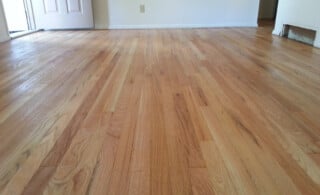 Cleaning Hardwood Floors
Cleaning Hardwood Floors 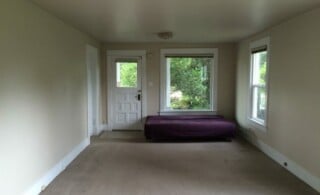 How to Hide Pesky Carpet Seams
How to Hide Pesky Carpet Seams 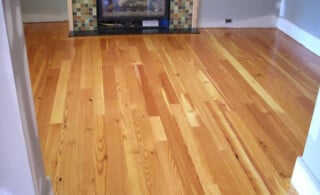 Divine Pine Flooring
Divine Pine Flooring 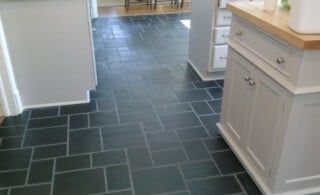 Slate Floors Make for a Great Decor
Slate Floors Make for a Great Decor 

What health hazard does refinishing hardwood floors poses (like sanding, polishing & using urethane mats. etc)? I have red oak original hardwood flrs under existing carpet. We’re debating to kerp the old catpet or refinish the original hardwd flrs. We’re really concerned abt health issues that fine wood dust from sanding may cause. What would be the safest process, healthwise on how to refinish hardwood flrs? Thank you.
I worked in the residential field for years and saw every aspect of building homes. I do not recommend that any average home owner attempt refinishing a hard wood floor. First, the sanding can be tricky. When the machine is running you cannot stop for a second. If you do you’ll make round depressions that you’ll have to fade out. The sanding must be perfectly even or you will end up ruining the floor. Next, if you have a dust allergy, don’t even think about it. The best mask may help your lungs, but at one point when taking it off or vacuuming it up you are going to breathe the dust. It will be in your hair and on your clothes. As far as finishing , it must be applied perfectly even. Next the smell of the sealer and varnish is extremely toxic. Now I guess I should say if you’re a really talented man or woman, you may do a professional looking job. But if you’re someone that is only average as a handy person, the Italians say it best, forget about it! A properly finished hardwood floor, will draw everyone’s attention immediately, but so will a botched job and all the excuses you can think of won’t make it look any better! Remember, a hardwood floor already installed is the biggest part of the cost. Why get cheap at this point? ……Now ask yourself, do you feel lucky ? Good luck, be well and God bless! Vinny